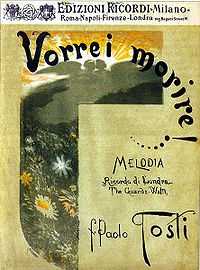Francesco Paolo Michetti

Francesco Paolo Michetti (October 2, 1851 – March 5, 1929) was an Italian painter.


Biography
He was born in Tocco da Casauria in the Province of Chieti. His father having died when he was a boy, Michetti was forced to work with a local artisan. In 1868, Michetti was awarded a stipend by the province to study at the Accademia (now Istituto) in Naples under Domenico Morelli. Among his colleagues was Eduardo Dalbono. There he also interacted with Filippo Palizzi, Giuseppe De Nittis, and Marco De Gregorio, artists of the School of Resina. Disciplinary problems soon caused Michetti to return to Chieti.[1] He began to spend time in Francavilla a Mare, which by 1878 would be his residence.
He traveled to Paris, encouraged and supported by De Nittis, by the patron Beniamino Rotondo, and by the art merchant Reutlinger. In Paris, he exhibited in the Salon of 1872: Ritorno dall’erbaggio, Dream of innocence, and The pumpkin harvest. He also exhibited at Salons in 1875 and 1876. In 1874, he befriended the Spanish painter Mariano Fortuny in Naples.
In 1877, with his Corpus Christi procession, a highly colorful, efervescent depiction of a festival, he became recognized as one of the best in the schools exhibition. The next year in Paris, he exhibited Springtime of love, a depiction of families enjoying a beach.
At the 1880 National Exposition in Turin, Michetti exhibited: Palm Sunday, the Pescatrici di londine, and i Morticelli. Gubernatis remarks on the vivaciousness of these works, and says that the success of Naples had intoxicated the mind of the young artist, and he bitterly resented that having been led astray in search of the strange and far-fetched, he had suffered shipwreck in the indecipherable. While some proclaimed that these paintings established his indisputable fame, (some thought) those works had greater success than they deserved. From all sides (there was) exaggeration, and while Michetti had abandoned himself to his flaws, drifting from his eagerness to become a colorist to a display that bordered on the baroque, much to the opinion that sometimes the thrill of his palette convulsed his criterion of artist. But alongside these defects were revealed most positive qualities: the feeling and poetry of the real, unlike many others, even among the best, who do not see anything beyond their given direction of art, beyond the school which are affiliated.[2]
At the 1881 Exhibition of Milan, he was a prolific exhibitor with 34 paintings, mostly studies of faces, full of sentiment, and seascapes, full of windblown sails. Gubernatis states that it was a phantasmagory of form and color, that reveals the fecundity and courage of the artist.[3] The painting Il Voto describes the zealous and ecstatic devotion of lower classes for an icon and reliquary.[4]
He is described as having a temperament violent yet refined, restless, irrepressibly investigational.[5] While he lived at a picturesque Francavilla al mare, and is known for his genre and pastoral scenes, his output included historic and religious themes.
Later in life, he was awarded recognition, in 1896 he was named a member of the Accademia Pontaniana of Naples; in 1903, he was admitted in to the Roman Academy of St Luke; and in 1911 was named honorary president of the regional committee for the Esposizione pescarese nel 1911, in 1913 he was named to the commissione ordinatrice della Galleria nazionale d’arte moderna of Rome. In June 1909, he was nominated to be an Italian senator. His son, Giorgio Michetti, was a World War I flying ace.

Francesco Paolo Michetti died in Francavilla al Mare on March 5, 1929, after contracting pneumonia.[6]
References
- Catalogo Illustrato: La Biennale de Venezia Volume 4 (Mostra Retrospettiva). Stabilimento di Carlo Ferrari. 1901. pp. 193–194.
- Entry in Encyclopedia Treccani.
- ↑ Treccani encyclopedia entry
- ↑ Gubernatis, successo di Naples avesse inebriato la mente del giovane artista e deplorava amaramente che traviato nella ricerca dello strano e dello inverosimile, fosse naufragato nell'indecifrabile, mentre altri proclamava che in quelle tele appunto si affermava in modo indiscutibile la sua fama. Certo quelle sue opere ebbero un successo maggiore di quel che meritassero. Da ogni parte si esagerava, e veramente il Michetti si abbandonava ai propri difetti, lasciandosi trasportare dalla sua foga di colorista in uno sfoggio che rasentava spesso il barocco, tanto da parere che talora l' ebbrezza della sua tavolozza sconvolgesse il criterio dell' artista. Ma accanto a questi difetti si rivelavano qualità più positive: il sentimento e la poesia del vero, a differenza di moltissimi altri, anche fra i buoni, i quali non vedono che dietro un dato indirizzo d' arte, dietro la scuola cui sono affigliati.
- ↑ una fantasmagoria di forma e di colore, che rivelava tutta la fecondità e la bizzarria dell'artista
- ↑ Dizionario degli Artisti Italiani Viventi: pittori, scultori, e Architetti., by Angelo de Gubernatis. Tipe dei Successori Le Monnier, 1889, page 298-300.
- ↑ un'ingegno violento e farrinato insieme, irreqieto, ricercatore prorompente, Catologo Illustrato Biennale Venice, page193.
- ↑ Ginex, Giovanna (2006). The History of an Art Collection: 19th-20th Century Paintings Collected by Eugenio Balzan. Lugano [Switzerland]: Cornèr Banca. p. 188. OCLC 156796216.